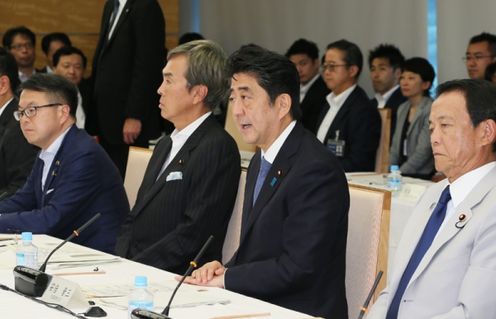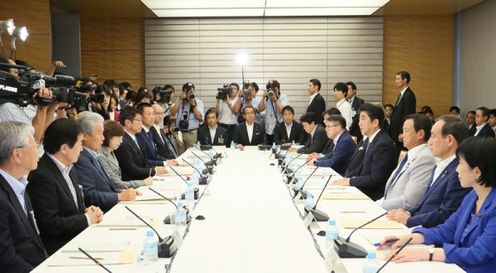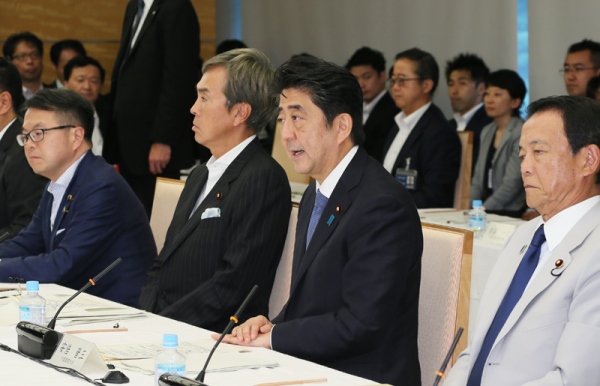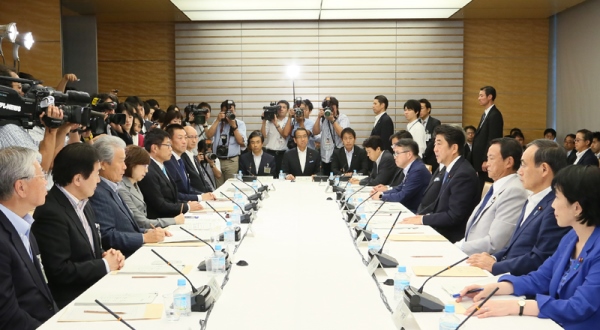Home > News > The Prime Minister in Action > September 2016 > Council on Investments for the Future
The Prime Minister in Action
Council on Investments for the Future
September 12, 2016

Photograph of the Prime Minister making a statement (1)

Photograph of the Prime Minister making a statement (2)
[Provisional Translation]
Prime Minister Shinzo Abe held the first meeting of the Council on Investments for the Future at the Prime Minister’s Office.
At the meeting, investments for the future and issues in the construction sector were discussed.
Based on the discussion, the Prime Minister said,
We will have a general review of the Growth Strategy and structural reforms over the past three years to clarify what has been missing in the actualization of the activities of private sector groups, and what obstacles prevent the remarkable technological revolution of recent years from taking hold in the lives of the public and society. We will pursue reforms without hesitation.
This Council on Investments for the Future will be a new control tower for the Growth Strategy.
We will deepen discussion around the three key points of fundamentally heightening the convenience of the lives of the public, making the regions central players in efforts to take the world stage, and implementing structural reforms in industries in order to grow the germ of the new technological revolution into social change.
Today, as our first measure, we have already swiftly approved a concrete policy toward a productivity revolution at construction sites through the fourth industrial revolution.
We aim to increase productivity at construction sites by 20% by 2025.
To that end, within the next three years, we will introduce surveying drones and other cutting-edge technology at public construction sites where bridges, tunnels, and dams are being built, tie together the entire construction process, from construction to inspections, through three dimensional data, and introduce new construction methods.
This will act as a substitute for site work usually done by people, and make it possible for workers to gain knowledge in a matter of months that would normally take many years to acquire.
We will do away with the image people have that construction work is difficult, dirty, and dangerous, and work to attract diverse human resources to the sector. In doing so, we will alleviate issues related to a lack of workers. Small- and medium-sized construction sites across the country will change dramatically as well.
I ask the relevant ministers to work toward the direction set by Minister Ishihara and realize concrete measures.
We received constructive proposals for future discussions from private sector members today. We will deepen discussion around the primary fields related to those at the meetings for the thorough promotion of structural reforms and work to realize reforms. I ask that relevant ministers undertake a general review of structural reforms and get to work immediately on the necessary discussions.”


